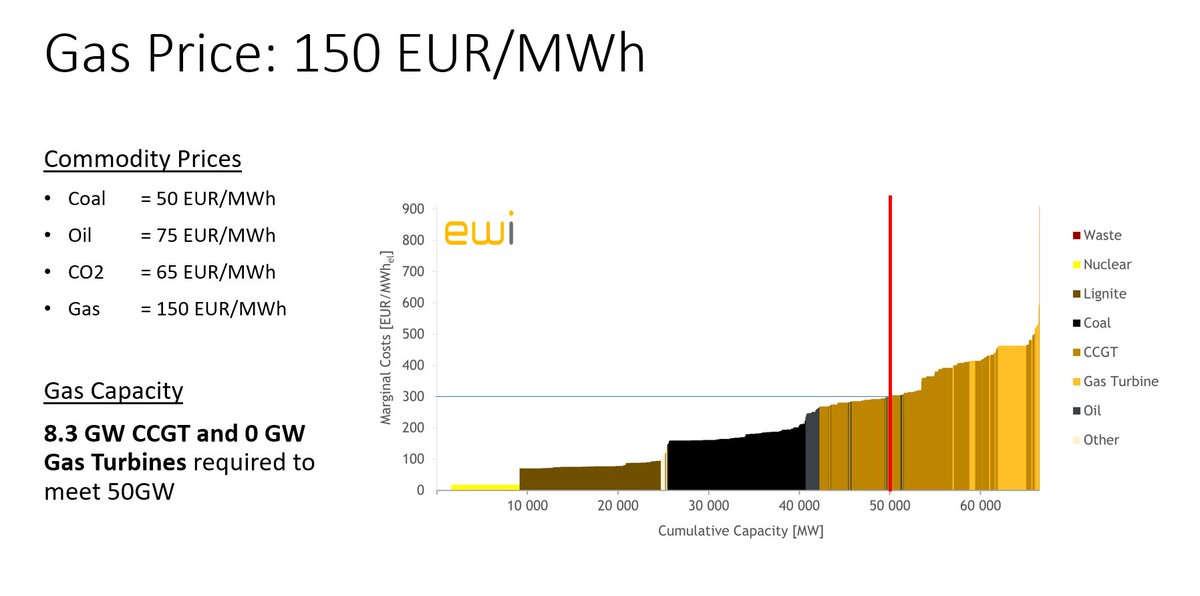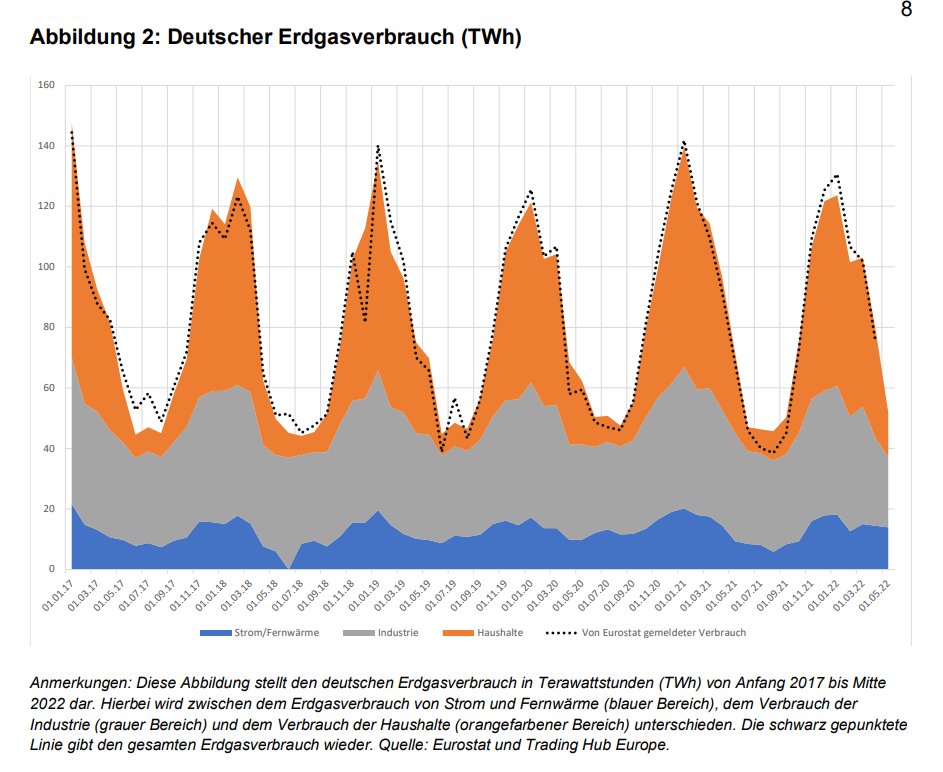
A 🧵on the cover of the #MarketDesignConsultation. The bullet points are my summary of the text, and my comments are in brackets.
[The document seems to have had some last-minute changes, given some word duplications and reference to earlier parts that do not exist]
1/
[The document seems to have had some last-minute changes, given some word duplications and reference to earlier parts that do not exist]
1/
Causes
•High gas prices due to Russian gas withholding
•increasing energy demand after Covid
[Lack of hydro and French nuclear not mentioned even though that shortfall represented 7% of EU power generation in 2022]
Problem Description
•high prices
•Risk to SoS
2/
•High gas prices due to Russian gas withholding
•increasing energy demand after Covid
[Lack of hydro and French nuclear not mentioned even though that shortfall represented 7% of EU power generation in 2022]
Problem Description
•high prices
•Risk to SoS
2/
Current crisis policies
•Reduce consumption (mentioned 3x)
•Roll-out RES
•Secure alternative supplies
•Temporary state-aid framework
•Gas storage regime
•« EU implemented … Price-limiting regimes to avoid windfall-profits in elec&gas» [what are those ?]
3/
•Reduce consumption (mentioned 3x)
•Roll-out RES
•Secure alternative supplies
•Temporary state-aid framework
•Gas storage regime
•« EU implemented … Price-limiting regimes to avoid windfall-profits in elec&gas» [what are those ?]
3/
Current market design
•Worked well for SoS, decarb & efficiency in “normal circumstances” [but didn’t it perform well in the crisis?]
•Provided innovative products in retail market
[Were ill-hedged retailers & lack of longer-term retail-products not exactly a weak-spot?]
4/
•Worked well for SoS, decarb & efficiency in “normal circumstances” [but didn’t it perform well in the crisis?]
•Provided innovative products in retail market
[Were ill-hedged retailers & lack of longer-term retail-products not exactly a weak-spot?]
4/
Longer term challenge
•Cause: Rising share of variable RES & Decarbonisation
•Challenge: Investment in weather independent low-carbon technologies [nuclear?]
•Tools: Locational signals [odd to single this out in this section]
6/
•Cause: Rising share of variable RES & Decarbonisation
•Challenge: Investment in weather independent low-carbon technologies [nuclear?]
•Tools: Locational signals [odd to single this out in this section]
6/
Problems w short-term markets
•Marginal cost pricing has exposed consumers to high prices & bills
•The regulatory framework regarding long-term instruments provided insufficient protection
•High revenues for some generators
[this simplification is likely inappropriate]
7/
•Marginal cost pricing has exposed consumers to high prices & bills
•The regulatory framework regarding long-term instruments provided insufficient protection
•High revenues for some generators
[this simplification is likely inappropriate]
7/
But, short term markets are essential
•Right incentives for short-term operation of demand, supply and network
•But, prices can be too high
8/
•Right incentives for short-term operation of demand, supply and network
•But, prices can be too high
8/
Solution
•“additional instruments and tools [what is the difference?] that incentivize the use of long-term contracts …”, decouple bills from short-term markets, hence reduce volatility.
•Narrative: Bills should better reflect the overall electricity mix.
9/
•“additional instruments and tools [what is the difference?] that incentivize the use of long-term contracts …”, decouple bills from short-term markets, hence reduce volatility.
•Narrative: Bills should better reflect the overall electricity mix.
9/
[I get the point, that many countries supported RES/nuclear-investment, but can only partially capture their extraordinary rents, essentially through risky past contract design]
10/
10/
Proposed solution 1: PPAs
•Can lock-in prices for RES producers & consumers
•But still largely limited to few countries and large consumers
•COM considers incentivising through pooling and auctioning and credit guarantees
11/
•Can lock-in prices for RES producers & consumers
•But still largely limited to few countries and large consumers
•COM considers incentivising through pooling and auctioning and credit guarantees
11/
Solution2: CfDs
•Specifically two-way CfDs
•Auctioned by member states
[simple CfDs fail to optimise location and timing]
•Q1: mandatory or voluntary
•Q2: only future or also existing assets
[CfDs might crowd out more efficient PPAs]
12/
•Specifically two-way CfDs
•Auctioned by member states
[simple CfDs fail to optimise location and timing]
•Q1: mandatory or voluntary
•Q2: only future or also existing assets
[CfDs might crowd out more efficient PPAs]
12/
Support options for CfDs
1.MS to choose CfD provisions
2.Mandatory for any state support for RES
3.Voluntary for some existing assets [add option value for RES-assets]
4.Mandatory for all existing assets [expropriation]
13/
1.MS to choose CfD provisions
2.Mandatory for any state support for RES
3.Voluntary for some existing assets [add option value for RES-assets]
4.Mandatory for all existing assets [expropriation]
13/
RES investment is needed
•RES can [not:will] reduce energy prices
•Interventions need to preserve and enhance incentives for investment
•Provide investors with certainty and predictability but not increase prices
[implies that the state takes more risk?]
14/
•RES can [not:will] reduce energy prices
•Interventions need to preserve and enhance incentives for investment
•Provide investors with certainty and predictability but not increase prices
[implies that the state takes more risk?]
14/
Replacing gas
•Gas’ current role needs to be picked up by other solutions
•Incentivising flexibility solutions [incl. weather independent RES and “low carbon sources” -> almost comical that they do not write “nuclear”]
15/
•Gas’ current role needs to be picked up by other solutions
•Incentivising flexibility solutions [incl. weather independent RES and “low carbon sources” -> almost comical that they do not write “nuclear”]
15/
Incentives for flexibility development 1
•adjust tariff design [i.e., not wholesale market design]
•improve data granularity [e.g. submeters]
•new [retail?] products to shift/lower demand
16/
•adjust tariff design [i.e., not wholesale market design]
•improve data granularity [e.g. submeters]
•new [retail?] products to shift/lower demand
16/
Incentives for flexibility development 2
•adjust intraday markets [how will this be a substantial investment incentive?]
•consultation seeks input on adequacy and investments [this main point is pretty hidden]
•increased grid investments
17/
•adjust intraday markets [how will this be a substantial investment incentive?]
•consultation seeks input on adequacy and investments [this main point is pretty hidden]
•increased grid investments
17/
Short term market interventions
•should emergency measures be extended (under which conditions)?
•If it lowers prices and keeps investments
[THIS extension of emergency measures can be one landing point of the whole complex market design discussion]
18/
•should emergency measures be extended (under which conditions)?
•If it lowers prices and keeps investments
[THIS extension of emergency measures can be one landing point of the whole complex market design discussion]
18/
Consumer protection
•High energy prices have social and economic consequences
Solution:
•allow community energy
•Suppliers should pass-through lower portfolio cost
•Enforce proper hedging of suppliers
•Allow MS to subsidise block-tariffs
19/
•High energy prices have social and economic consequences
Solution:
•allow community energy
•Suppliers should pass-through lower portfolio cost
•Enforce proper hedging of suppliers
•Allow MS to subsidise block-tariffs
19/
Market Manipulation
•REMIT in principle prevents Market Manipulation [really?]
•But framework should be updated
20/
•REMIT in principle prevents Market Manipulation [really?]
•But framework should be updated
20/
Next Steps:
•Consultation closes February 13th
•Legislative proposals by March
21/
•Consultation closes February 13th
•Legislative proposals by March
21/
Now my take:
The cover-document is not a consistent analysis of what causes the current market outcomes, why they are bad and how they can be addressed.
It is a disjoint collection of potential areas of intervention and potential tools.
-> it is a policy document
22/25
The cover-document is not a consistent analysis of what causes the current market outcomes, why they are bad and how they can be addressed.
It is a disjoint collection of potential areas of intervention and potential tools.
-> it is a policy document
22/25
Not properly linking tools to failures illustrates, that the interactions in the market are not well understood,e.g.:
•role and interplay of different market actors
•interplay of national/European rules on taxation, network regulation, wholesale and retail market design
23/
•role and interplay of different market actors
•interplay of national/European rules on taxation, network regulation, wholesale and retail market design
23/
The document implies unrealistic expectations as it does not spell out fundamental trade offs: e.g., get more investment (favour future consumers) or lower prices (favour current consumers) or get both (and increase gov't liabilities)
24/
24/
A stock-take of the current sector structure and its implications, incl. some detailed modelling of cash-flows/incentives for all major actors in different reform-scenarios would be needed for fact-based policy-making.
Current discussions border on alchemy.
end/
Current discussions border on alchemy.
end/
• • •
Missing some Tweet in this thread? You can try to
force a refresh

















